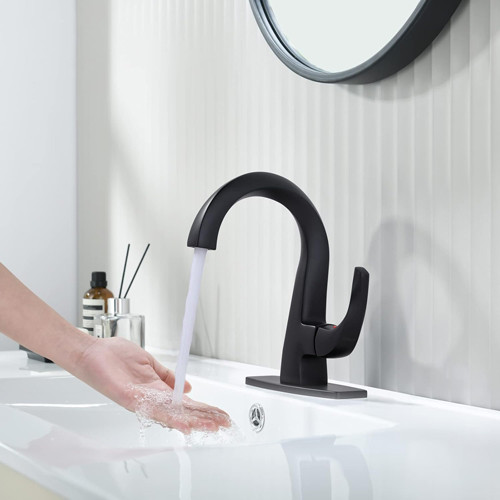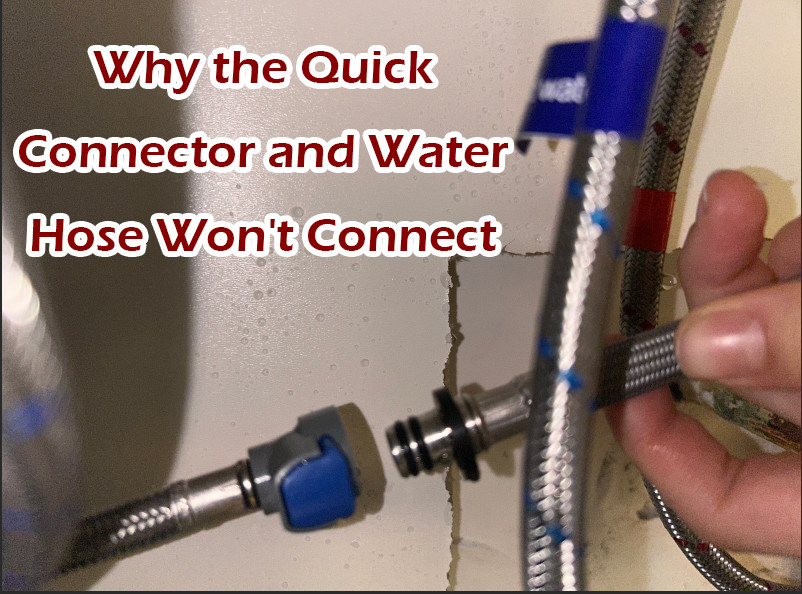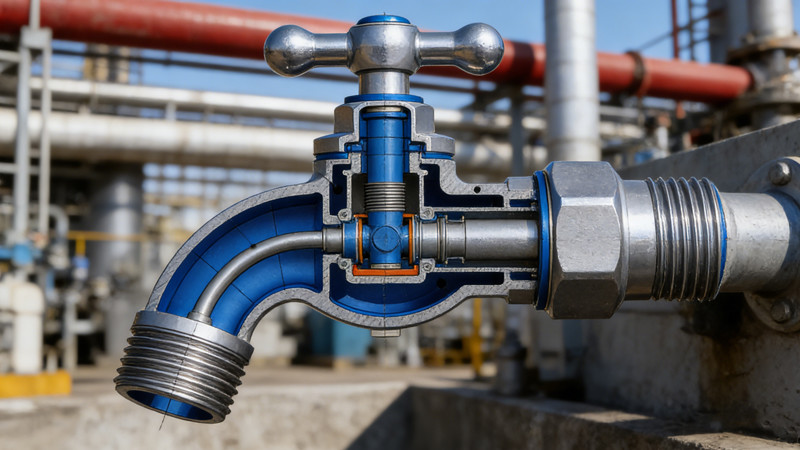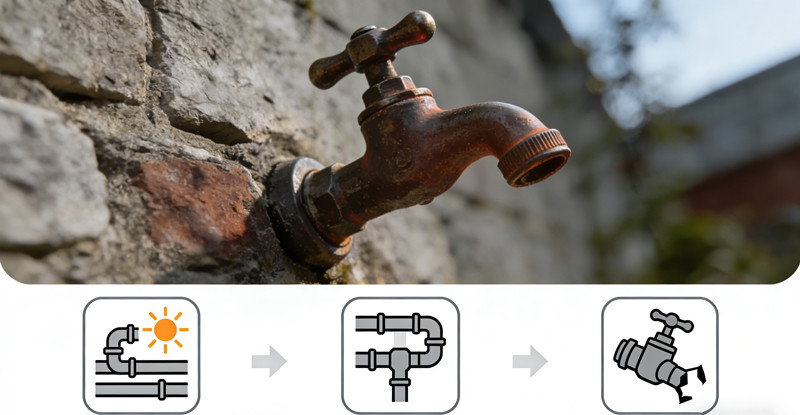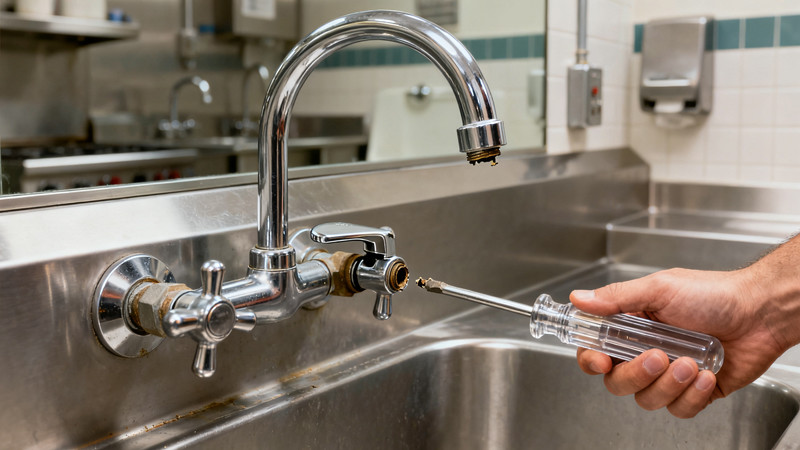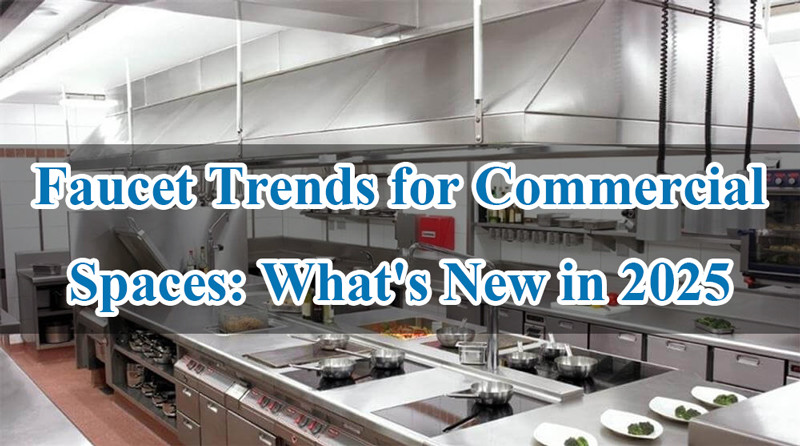
The world of commercial design is constantly evolving, and faucets are no exception. As businesses and public spaces strive to meet the needs of their customers while balancing aesthetics, sustainability, and practicality, faucet trends for 2025 are pushing boundaries. From hotels and restaurants to offices and airports, faucets are becoming more than just functional fixtures—they are a key element of the overall design experience. In this post, we’ll explore the top faucet trends for commercial spaces in 2025, highlighting innovations that improve user experience, increase efficiency, and contribute to sustainability.
1. Touchless Faucets: A Hygiene Revolution
One of the most significant trends in commercial faucets is the increasing popularity of touchless technology. While touchless faucets have been around for years, their widespread adoption has skyrocketed, particularly in high-traffic areas like restaurants, hotels, and airports. In 2025, the trend is set to continue, with even more sophisticated models hitting the market.
Touchless faucets offer a seamless, hygienic experience by using infrared sensors to detect the presence of hands or objects, automatically activating the water flow. This reduces the need for customers to touch faucet handles, minimizing the spread of germs and bacteria. In high-touch areas, such as public restrooms or kitchens, these faucets are becoming a must-have to ensure cleanliness and promote a safer environment.
Beyond hygiene, touchless faucets are also more water-efficient. Many models are designed to regulate the water flow based on usage, reducing water waste in busy commercial environments. With the global emphasis on sustainability and conservation, this functionality is a win-win for both businesses and the environment.
2. Water Conservation and Sustainability
Sustainability has become a top priority in the design of commercial spaces, and faucets are no exception. As businesses are under increasing pressure to reduce their environmental impact, many are opting for water-saving solutions. In 2025, we can expect to see even more innovations in eco-friendly faucet designs.
Low-flow faucets with aerators and water restrictors are already a common sight in commercial spaces, but advances in technology are making them more efficient than ever before. These faucets use less water while maintaining high water pressure, providing a comfortable user experience without wasting resources.
In addition to low-flow features, many commercial faucets in 2025 will be designed with materials that are more sustainable and recyclable. Faucets made from recycled metals or biodegradable materials are becoming increasingly popular, aligning with businesses’ goals to reduce waste and promote sustainability.
Some faucets are also incorporating filtration systems that remove impurities from water, providing cleaner water without the need for bottled options. These built-in filtration systems not only improve water quality but also reduce plastic waste, making them a great choice for businesses looking to go green.
3. Smart Faucets: Connecting Design with Technology
As more businesses adopt smart technologies, it’s no surprise that faucets are getting smarter, too. Smart faucets, which can be controlled via mobile apps, voice assistants, or automated systems, are gaining traction in commercial spaces.
In 2025, smart faucets will be equipped with features that allow for even greater customization and efficiency. For example, businesses can program smart faucets to adjust water temperature and flow rates based on the specific needs of different users or times of day. This functionality is particularly useful in restaurants or hotels, where consistent water temperature is essential for food preparation or guest comfort.
Additionally, smart faucets can provide businesses with valuable data on water usage. With built-in sensors, these faucets can track water consumption patterns, enabling businesses to monitor and adjust their usage for greater efficiency. For example, if water flow exceeds a preset threshold, the system can send an alert to the building manager, prompting maintenance before the issue becomes a problem. This level of data-driven decision-making can help businesses optimize water usage and reduce costs.
4. Durability and Low Maintenance
In high-traffic commercial spaces, durability is essential. Faucets in these environments need to withstand constant use and still look great over time. In 2025, manufacturers are focusing on creating faucets that are both durable and easy to maintain.
Commercial faucets will feature advanced finishes, such as corrosion-resistant coatings and scratch-resistant surfaces, to maintain their appearance despite heavy use. Matte black, brushed nickel, and stainless steel are expected to remain popular finishes in 2025, offering both elegance and long-lasting durability.
Additionally, more faucets will come with self-cleaning features, such as built-in filtration or coatings that prevent water spots and mineral buildup. These low-maintenance designs make it easier for businesses to maintain a clean and polished look without spending excessive time and money on upkeep.
5. Design Flexibility and Customization
As commercial spaces become more design-conscious, businesses are increasingly looking for faucets that can complement their unique aesthetic. In 2025, faucet manufacturers will offer more customizable options, allowing businesses to choose from a range of finishes, shapes, and sizes to match their decor.
Hotels, for example, may opt for statement faucets that serve as design focal points in their bathrooms, while restaurants might choose sleek, minimalist faucets that blend seamlessly with modern interior designs. Commercial faucet manufacturers will offer a variety of styles to suit different design sensibilities, from industrial chic to contemporary elegance.
Moreover, businesses are increasingly seeking faucets that can be tailored to specific needs. For instance, a restaurant kitchen may require a faucet with multiple flow modes for different tasks, while an office building may prioritize ergonomic designs that make faucets easier for employees to use. Customization in terms of water flow, spout height, and handle style will allow businesses to cater to their specific requirements.
6. User Experience and Comfort
The user experience is a key consideration in faucet design, particularly in commercial spaces where customers or employees will be using faucets multiple times a day. In 2025, businesses will place greater emphasis on faucet designs that enhance comfort and usability.
Faucets with ergonomic handles, easy-to-grip levers, and smooth water flow will become standard features in commercial spaces. In bathrooms, businesses will prioritize faucets with touchless or motion-activated controls to make the user experience as seamless as possible. These designs will not only improve convenience but also ensure that people of all ages and abilities can use the faucets with ease.
7. Integration with Sustainable Building Systems
As sustainability becomes a key consideration in commercial building design, faucets will be increasingly integrated into building-wide water management systems. In 2025, businesses will opt for faucets that work in tandem with other sustainable systems, such as greywater recycling and water filtration systems, to reduce overall water consumption and promote eco-friendly practices.
These integrations will help businesses track and manage water usage more effectively, aligning with both environmental goals and cost-saving initiatives. Faucets will be more than just standalone fixtures; they will be part of a larger, interconnected system designed to maximize water efficiency and minimize waste.
Conclusion for Commercial Spaces
Faucet trends for commercial spaces in 2025 reflect a growing focus on sustainability, technology, and user experience. From touchless models that promote hygiene to smart faucets that enhance efficiency, businesses are investing in solutions that improve both functionality and aesthetics. As commercial spaces continue to prioritize environmental impact, durability, and comfort, the faucet industry will continue to innovate, ensuring that these essential fixtures not only meet the needs of today but also anticipate the demands of tomorrow.
 WOWOW Faucets
WOWOW Faucets